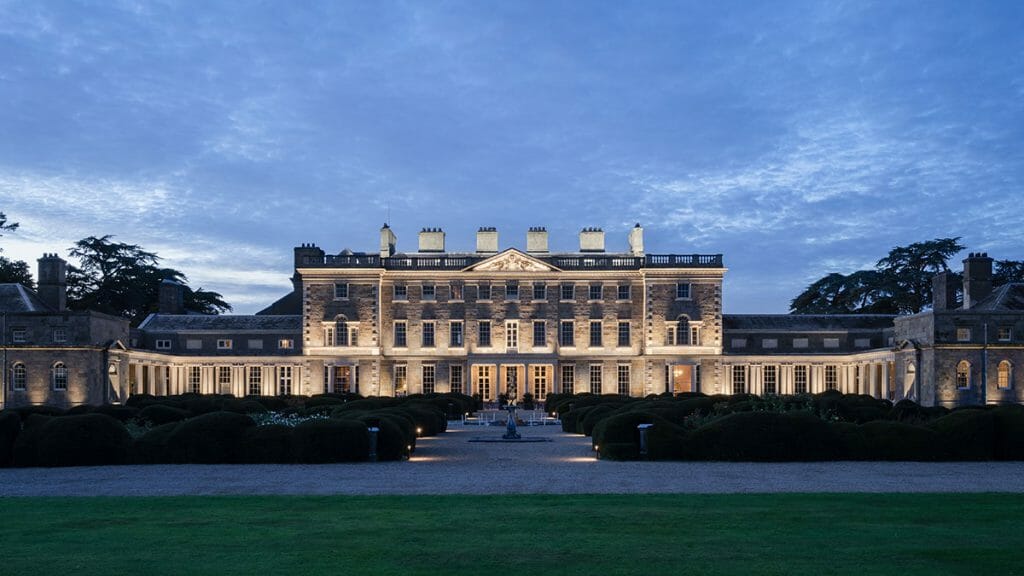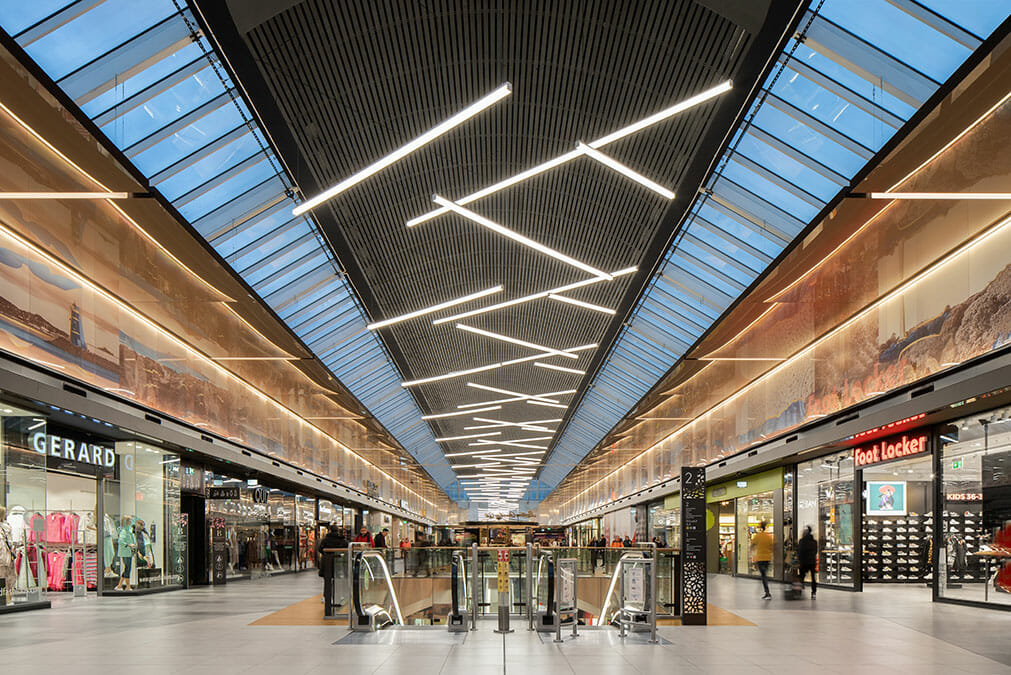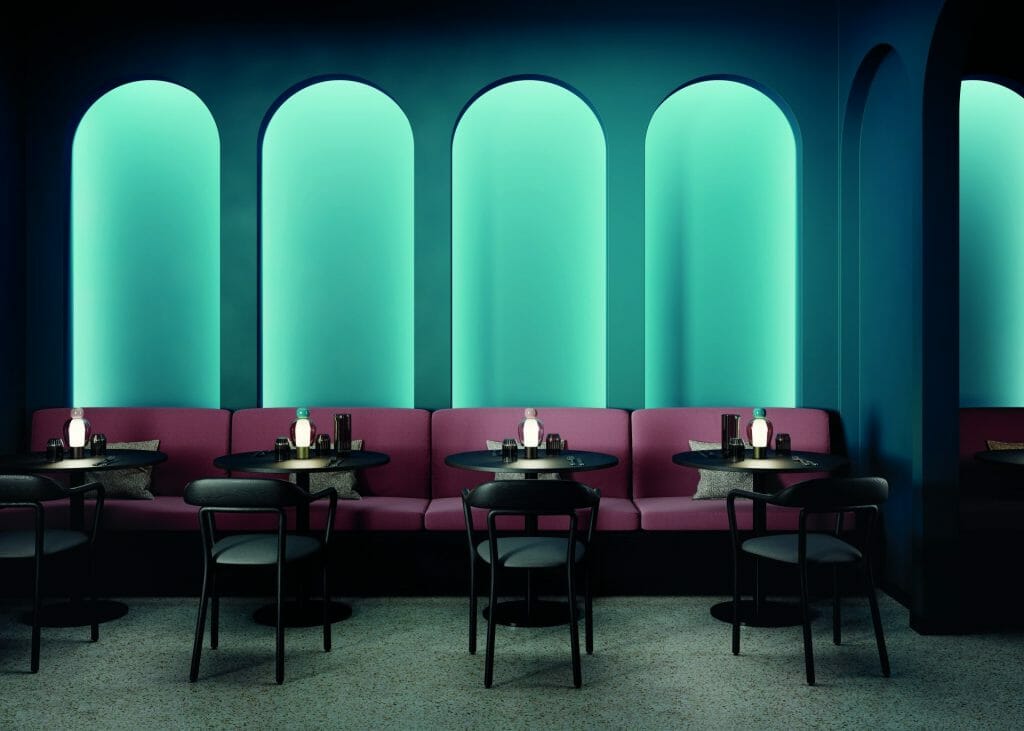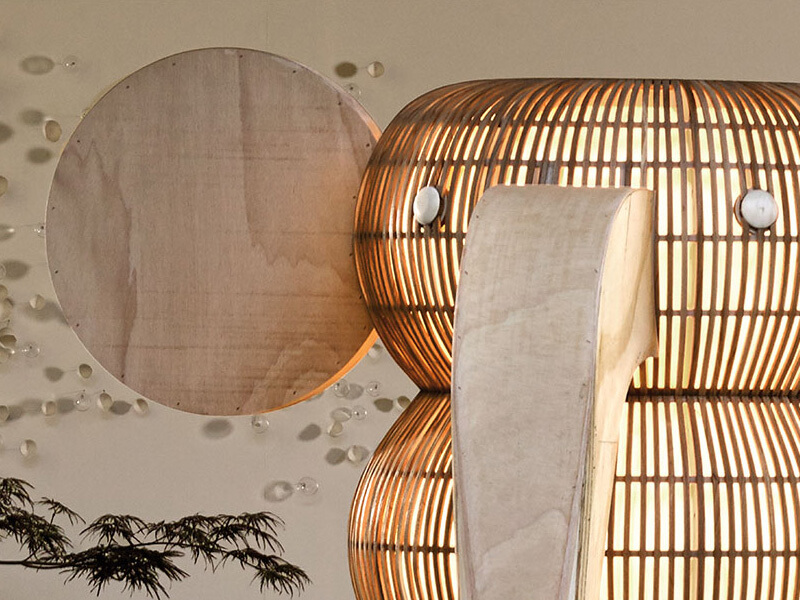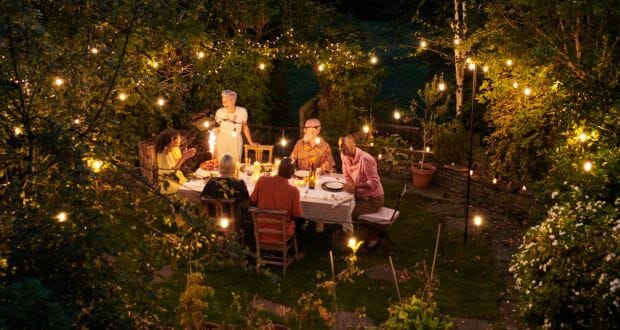- Contact us to discuss our residential design packages
- Shop
- Design
- Inspire
- About
- About
- Blog
- Tips to make the light fantastic in your garden

- August 17, 2021
- Monica Duggan
Four things to consider when planning your perfect outdoor lighting scheme
Fri, Jul 30, 2021, 06:00 Denise O’Connor
Outdoor lighting creates a lovely atmosphere during the summer when you’re spending time outdoors. Photograph: Getty Images
Most things for the outdoors tend to have a relatively short window of use in this country. From garden furniture to paddling pools, if we’re lucky, we only really get to enjoy them for about one or two months during the summer. But there is one outdoor feature that isn’t dependent on warm weather and that’s outdoor lighting. Outdoor lighting creates a lovely atmosphere during the summer when you’re spending time outdoors, but it is also a beautiful feature during the coldest and darkest months of the year when you’re looking out on to your garden from inside. Here are four things to consider to help you plan the perfect outdoor lighting scheme.
How do you want to use the space?
When planning your outdoor lighting scheme, start by deciding how you want to use the space. Is there an outdoor kitchen or barbecue area? Do you have pathways you would like to light? Are you trying to highlight planting? Different fittings will do different things, so it’s essential you know what you are trying to achieve to help you make the right choice.
Spike-mounted fittings are ideal for shrubbery and flowerbeds. Because they are adjustable, you can move them around as your plants grow and fill out. In-ground fittings are ideal for lighting trees and these can be recessed into the ground so you won’t see the fitting, making them a very discrete light source. “The more subtle you can keep your lighting, the better in the garden,” says Willie Duggan jnr, from Willie Duggan Lighting. “The lighting should draw your attention to the plants or features in your garden rather than being a feature itself,” he says.
What kind of atmosphere do you want to create?
The next thing to consider is the atmosphere you want to create. Do you want a relaxing space, or does the lighting need to be more functional? The mood you want to create will dictate the colour temperature of the bulbs you choose.
Colour temperature is measured in degrees Kelvin. Any bulb from 2,400-2,700K will be warm and create a relaxed atmosphere. 2,700-3,500K will be lukewarm. Anything over 3,500-4,000K will be cool and will create a fresher mood that suits some very contemporary spaces. Most good bulb brands will display these ratings on the box.
What do you want to highlight?
The next important consideration is deciding the features you want to highlight. These might be architectural features, a beautiful tree or different textures such as the stone of a wall, for example. “When we light at night time, we are controlling where we want people to look,” says Duggan. “You can make stuff disappear and highlight all the things you like,” he says.
When choosing your fitting, think about what you want to show and what you need to hide. Don’t pick a fitting that will highlight the stuff that doesn’t look good. Anything that lights at an angle will pick up imperfections on the surface. So it’s important to consider how the light will interact with the surface you are putting it on when choosing your light fitting. A lantern-type fitting that gives a wash or pool of light will be a better option on an imperfect wall than an up-and-downlight fitting, for example.
Be careful with the use of in-ground uplighters on certain walls as they will show up any imperfections in the render or plasterwork. But if you have a textured wall like stone, they can be really effective.
When choosing what features to light, be careful not to overdo it. “You can’t light everything,” says Duggan. “If you light everything, nothing will stand out,” he warns.
Don’t skimp on quality
When it comes to outdoor lighting, the quality of the fittings you choose is critical. “You need to be careful in our climate,” says Duggan. “There are many outdoor fittings used on the continent which are not suitable here,” he explains. Even though a fitting is called an outdoor light, it doesn’t necessarily mean that it’s suitable for Irish weather conditions.
The way to determine whether or not a fitting is suitable is to check the IP rating. The IP rating is a guide as to how waterproof the fitting is. Essentially what you put outside should be equivalent to what you would put in your shower. “I wouldn’t recommend going any less than IP 65,” says Duggan.
In countries like Spain and Italy, they can get away with using IP43. But they don’t get the same rain as we do. All light fittings will have the IP rating listed on the box or in the details if you are buying online, so be sure to check this before you buy.
Original article from Denise O’Connor. Denise is an architect and design consultant, @optimisedesign
- Design,Tips
- Denise O'Connor, Design, Garden Lighting, Interior Design, Lighting Design, Outdoor Lighting, The Irish Times

About Monica Duggan
Monica grew up with a screwdriver & bulb in her hands before she started to 'hassle' the boss! After gallivanting around the world & getting an education she worked in all areas of the business, and was a natural fit for developing Willie Duggan further. She does her best thinking struggling up a mountain, hiking a trail or beating herself up in the gym!
Browse by category
Browse by tag
- #IDSW2019
- 2019
- 2021
- 2022 Award Winners
- 48 volt track
- About Us
- Ambient Lighting
- Architect
- Art
- Arturo Alvarez
- Awards
- Bathrom
- Bathroom
- Bathroom Design
- Bathroom Lighting
- Baynetcap
- bedroom lighting
- Behind the Scenes
- Biophilia
- Biophilic Design
- Blanchardstown Shopping Centre
- Blog Post
- Blue
- Brands
- building materials
- bulbs
- Carton House
- church design
- Colour
- Comfort Lighting
- commercial
- commercial design
- Contract Interiors
- cost
- Cottage Design
- Creativity
- Deconstructing
- decorative lighting
- Denise O'Connor
- Design
- Design Team
- Details
- Dining Space Lighting
- Downlighting
- downlights
- E14
- electrician
- Electrics
- Emotion
- Emotional Lighting
- enviromentally friendly
- Estluz Laverd
- Exhibitions
- Experience
- experiential showroom
- Exterior Lighting
- external lighting
- eyelit65R
- Festoon Lighting
- Finalists
- Finances
- first fix
- five star hotel
- floor lamp
- Floor Light
- Floor Plan
- flooring
- functional lighting
- Garden
- Garden Lighting
- Getting the lighting right
- Glare
- GU10
- guide
- Haberdashery
- Hard Wood Flooring
- healthy lighting
- Heart of the home
- hidden lighting
- hints
- Home
- Home renovation
- house design
- Hypro
- Illuminated Furniture
- IMNDA
- importance of windows
- inchsawmills
- Interior Design
- Interior Lighting Design
- Interiors Trends
- International Dark Sky Week 2019
- internorm
- IP Rating
- Irish Times
- Ivela
- Jan Battles
- kitchen
- Kitchen Design
- Kitchen lighting
- Kitchen Squeeze
- Lampshades
- Landscape Lighting
- Layers of Light
- LED
- LEED
- Light
- light and health
- Light Art
- Light Brands
- Light Design
- Light Effects
- Light Fitting
- light masterplanning
- Light Pollution
- Light Technology
- lightbulbs
- Lighting
- Lighting Company
- lighting controls
- Lighting Design
- lighting designer
- Lighting Designers
- Lighting Plan
- Lighting Products
- lighting switches
- lighting tips
- LIT awards
- Living Space Lighting
- LND
- LZF
- Minimal Glare
- Monica Duggan
- mood lighting
- Motor Neurone Ireland
- munster joinery
- Nest
- new build
- New Year
- new york
- newbuild
- Newsletter
- night time lighting
- NYCxDESIGN
- Online Consultation
- Open Plan Space
- Our Team
- Outdoor
- Outdoor Lighting
- Parquet FLooring
- pendant light
- Pendants
- Piet Oudolf
- plastering
- plumbing
- Power of Switching
- Prolicht
- recessed lighting
- reducer
- reflections
- renovate
- Renovation
- Residential Lighting
- Residential lighting design
- retail
- Retro Fit
- riai
- salvaging
- scene setting
- Self build
- Self Build Newsletter
- selfbuild
- senator
- shadows
- sonos
- spacer
- Spotlights
- st bartholomews church
- Studio Italia
- sustainable
- sustainable building
- switching
- table lamp
- Table Light
- talalighting
- Task Lighting
- The Irish Times
- timber frame
- tips
- Trend
- tricks
- UGR
- Unified Glare Rating
- voliere
- willie duggan
- willieduggan
- Windows
- wiring





- Inspire
